Container Gardening Tips: Choosing Your Container
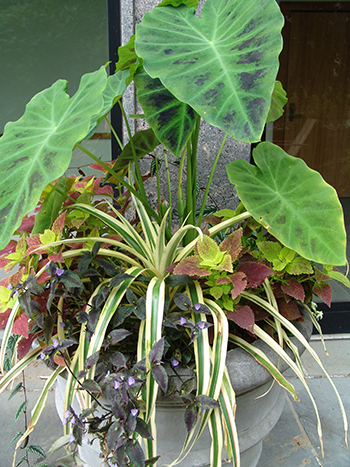 While it’s true that a single container can be captivating in its own right, as you begin your container project consider, as you select the right size, style and material of the vessel itself, how it will be part of a larger picture.
While it’s true that a single container can be captivating in its own right, as you begin your container project consider, as you select the right size, style and material of the vessel itself, how it will be part of a larger picture.
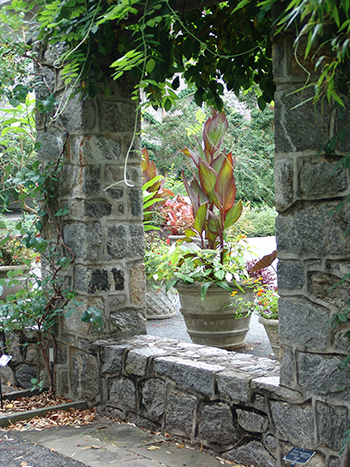
Identifying the appropriate scale to suit your space will help you plan the composition of your design as well as how much growing medium you’ll need to keep your plants happy and healthy. photo credit: R. Robert
Is your canvas a front stoop or an acre lot? A mature garden or a blank slate? Identifying the appropriate scale to suit your space will help you plan the composition of your design as well as how much growing medium you’ll need to keep your plants happy and healthy.
Choosing the largest container for your space and budget is best, as larger amounts of growing media help hold moisture in the soil. And it provides a smaller margin of error.
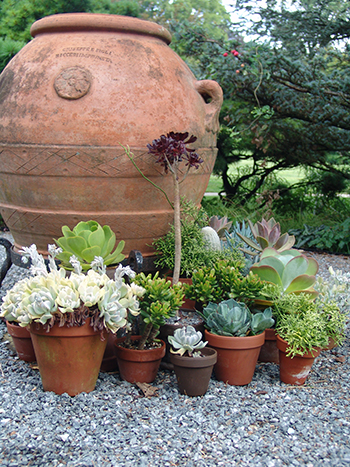
If you’re parti¬al to smaller containers, create groupings in threes to experiment with design elements such as texture, repetition, and juxtaposition of unlikely neighboring plants. photo credit: R. Robert
If you’re partial to smaller containers, create groupings in threes to experiment with design elements such as texture, repetition, and juxtaposition of unlikely neighboring plants. Regardless of size, it’s better to use peat-free, compost-based, manufactured soils, since they’re more porous than garden soil and provide better drainage.
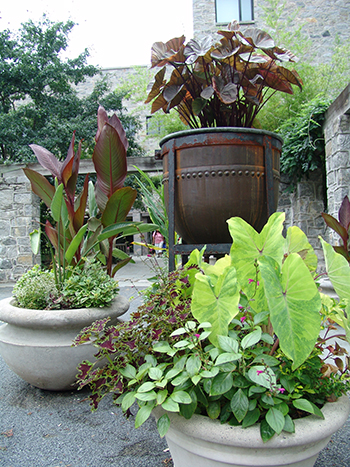
When it comes to the material of your container, consider alternatives to standard terra cotta or cast stone. photo credit: R.Robert
When it comes to the material of your container, consider alternatives to standard terra cotta or cast stone. In recent years, gardeners have become experimental, using everything from whiskey barrels to watering cans as new homes for their plants. But, if you plan to use your summer containers for winter interest, then consider concrete, metal, lead, plastic or fiberglass composite containers because they weather the elements well.
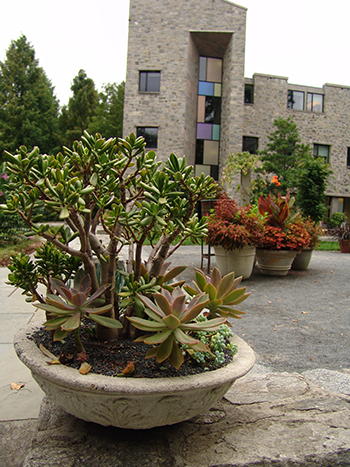
Fortunately, there are nearly as many variations in container styles as there are plants! Once you’ve decided on the scale and material, next consider the “theme” or “personality” of your composition. photo credit: R. Robert
Fortunately, there are nearly as many variations in container styles as there are plants! Once you’ve decided on the scale and material, next consider the “theme” or “personality” of your composition. If your plants will be wild and exciting, a modest container may work best. Or, if you want to feature muted plant personalities, a showier vessel will carry the weight of the design.
Explore all the containers on display at the Scott Arboretum of Swarthmore College this growing season. Get great plants to fill those containers at the Unusual Tropicals and Annual Sale on May 16.
This complete article originally appeared in County Lines April 2015 issue.





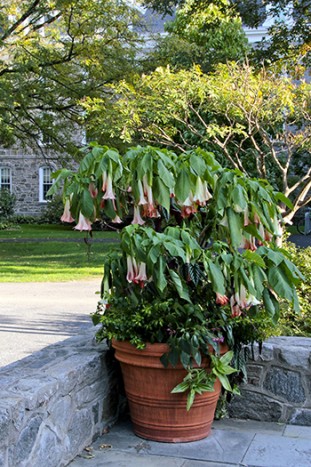
No Comments